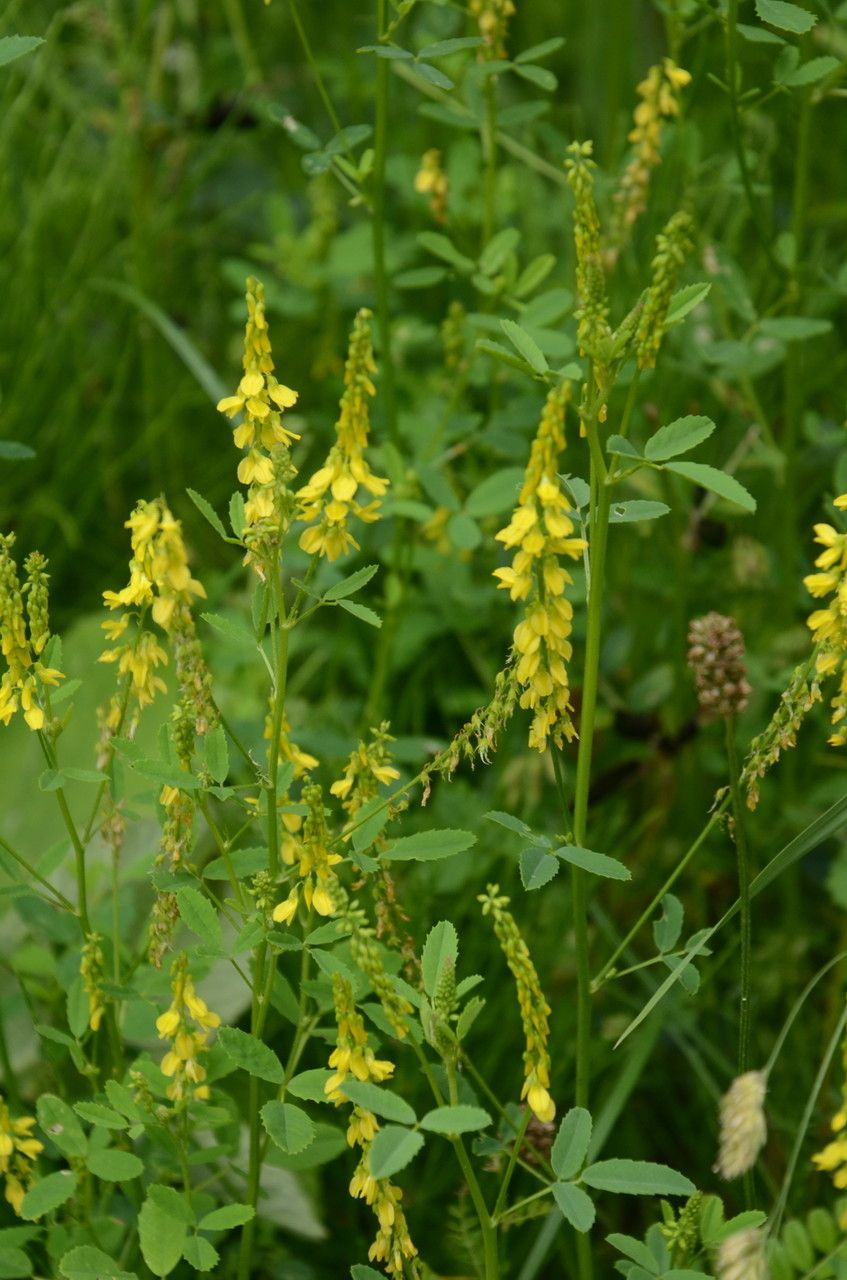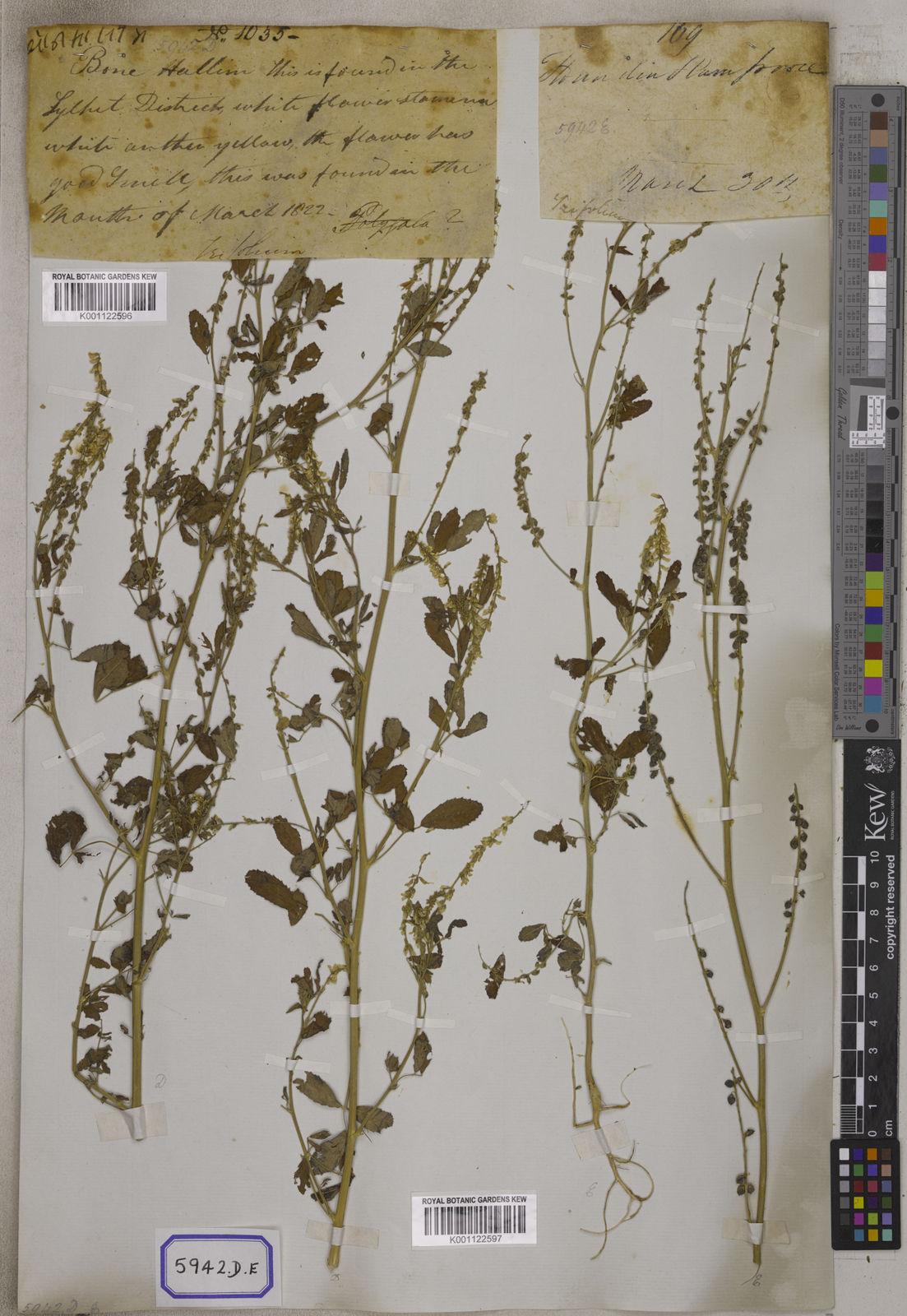Tall Sweet Clover
melilotus altissimus
Also known as: ["White Melilot","Sweet Clover"]
Overview
A tall, herbaceous plant in the Fabaceae family, known for its fragrant white flowers and nitrogen-fixing capabilities.
Benefits & Perks
["fragrant flowers","wildlife attractant (bees, butterflies, birds)","drought tolerant"]
Botanical Classification
| Phylum: | Magnoliophyta |
| Class: | Magnoliopsida |
| Order: | Fabales |
| Family: | Fabaceae |
| Genus: | Melilotus |
| Botanical Name: | Melilotus altissimus |
Plant Characteristics
Basic Information
- Category: Herbs & Weeds
- Suitable Location: garden bed or border in open areas
- Suitable For:
- Is Weed: No
- Allergenicity: low
Environmental Needs
- Climate: {"temperatureRange":"5–30°C"}
- Hardiness: {"zones":"4–9"}
- Misting: rarely required, only if ambient humidity is very low
- Drainage: Fast-draining to prevent root rot.
- Soil Type: Well-draining, loamy soil with added organic matter.
Maintenance Level
- Maintenance Level: low
- Toughness Level: high
- Pruning Frequency: Annually in early spring or after flowering.
- Pruning Intensity: Moderate pruning to shape the plant and remove up to one-third of growth.
Care Details
Ideal Sunlight Coverage:
Full sun (6–8 hours/day). Tolerates partial shade but may produce fewer flowers.
Sunlight Tolerance Tips:
Acclimate plants gradually to intense sunlight to prevent scorching. For indoor placement, provide the brightest possible light.
Care Requirements
Care Difficulty
easymoderate
Sunlight
full sun to partial shade
Rotate plants for even light exposure; use sheer curtains to diffuse harsh sunlight; avoid sudden light changes.
Watering
every 7–10 days during active growth, reduce in winter
Water thoroughly but infrequently to encourage deep roots; ensure soil dries slightly between waterings; avoid waterlogging.
Soil
well-drained, loamy soil with moderate fertility
pH: Slightly acidic to neutral (pH 6.0–7.0).
Avoid heavy clay soils; ensure pots have drainage holes; amend with organic matter.
Temperature
Prefers cool to moderate temperatures (60–75°F or 15–24°C). Tolerates frost but may struggle in extreme heat.
Monitor temperature extremes; adjust watering; protect from sudden drops.
Fertilizing
every 4–6 weeks during spring and summer
Fertilize sparingly to avoid leggy growth; stop feeding in late autumn; apply fertilizer to moist soil.
Propagation
Methods
Stem cuttings or seed. Stem cuttings are faster and more reliable.
Step-by-Step Propagation Guide
- Take a 4–6 inch cutting.
- Remove lower leaves.
- Dip in rooting hormone.
- Plant in medium.
- Keep moist and warm.
Best Time: Spring or early summer when the plant is actively growing.
Environment
Warm (70–75°F or 21–24°C), high humidity, and indirect light.
Medium
Well-draining potting mix with perlite or sand.
Hormone
Rooting hormone is optional but recommended for faster rooting.
Timeline
Roots develop in 2–4 weeks; establish in 8–12 weeks.
Tools Needed
Pruners, rooting hormone, small pots, misting spray bottle.
Quick Tips
Use healthy, non-flowering stems; maintain humidity with a plastic cover; avoid direct sunlight.
Pruning & Repotting
Pruning Guide
Method
Pinch back tips for bushiness; cut stems just above a leaf node.
Pruning Plan
Prune to maintain shape, encourage bushiness, and remove dead or weak growth.
Tools
Pruning shears, clean scissors.
Checklist
Sterilize tools; prune dead/damaged growth; shape the plant; clean up debris.
Repotting Guide
Best Season
Early spring before active growth begins.
Pot Size
One size larger pot (e.g., +2–3 inches in diameter).
Method
Remove plant gently; trim roots if needed; place in a new pot with fresh soil; water lightly.
Suggestions
Repot every 2–3 years or when roots fill the pot. Necessary to refresh soil and provide space.
Checklist
Choose appropriate pot; prepare fresh soil; handle roots carefully; water after repotting.
Advanced Care Tips
Watering Mastery
Watering Checklist
Check soil moisture; water deeply; ensure drainage; adjust seasonally.
How to Apply Water Properly
Water at the base of the plant, ensuring moisture reaches the root zone. Apply until water drains from the bottom, then allow the soil to dry before the next watering.
Watering Schedule Tips
Water deeply once per week during active growth, reducing frequency to every 2–3 weeks in winter. Adjust based on rainfall and soil moisture retention.
Soil Improvement
Add perlite or sand for drainage; incorporate compost for fertility; ensure good aeration.
Temperature Stress Management
Signs of Temperature Issues
Wilting, yellowing leaves, stunted growth, or bud drop in extreme heat; leaf damage or dieback in prolonged cold.
Cold Stress
Low temperatures slow growth but do not typically harm the plant unless prolonged below freezing.
Solution: Provide frost protection in severe cold; ensure good air circulation to prevent mold in damp conditions.
Hot Stress
Excessive heat can cause wilting, leaf scorch, and reduced flowering.
Solution: Provide afternoon shade, increase watering, and mulch to retain soil moisture.
Fertilizing Guide
Fertilizing Checklist
Use diluted fertilizer; apply during growing season; avoid winter feeding.
Fertilizing Method
Use a balanced, water-soluble fertilizer diluted to half strength every 4–6 weeks during active growth. Avoid fertilizing in winter.
Common Problems & Solutions
Toxicity Warning
Cats
Slightly ToxicCats may experience mild gastrointestinal distress upon ingestion of Melilotus altissimus. The coumarin content can potentially lead to anticoagulant effects with prolonged exposure.
⚠️ Symptoms:
🌿 Toxic Parts:
⚡ Toxic If:
if ingested
Dogs
Slightly ToxicIngestion of Melilotus altissimus seeds and flowers may cause mild gastrointestinal upset due to coumarin content. Prolonged or excessive ingestion could lead to more severe anticoagulant effects.
⚠️ Symptoms:
🌿 Toxic Parts:
⚡ Toxic If:
if ingested
Humans
Slightly ToxicMelilotus altissimus contains coumarin derivatives, which can lead to anticoagulant effects when consumed in significant amounts. The physiological impact includes interference with blood clotting mechanisms.
⚠️ Symptoms:
🌿 Toxic Parts:
⚡ Toxic If:
if eaten in large quantities
Frequently Asked Questions
Q: Is Tall Sweet Clover toxic to pets?
A: It is mildly toxic to dogs and cats.
Q: Does Tall Sweet Clover attract wildlife?
A: Yes, it attracts bees, butterflies, and birds.
Q: Is Tall Sweet Clover difficult to grow?
A: No, it is easy to grow and requires low maintenance.
Quick Reference
| Family: | Fabaceae |
| Care: | easy |
| Light: | full sun to partial shade |
| Water: | every 7–10 days during activ |
Get Expert Care Tips
Download the Plantious app for personalized care reminders and plant identification!
Google Play App Store






